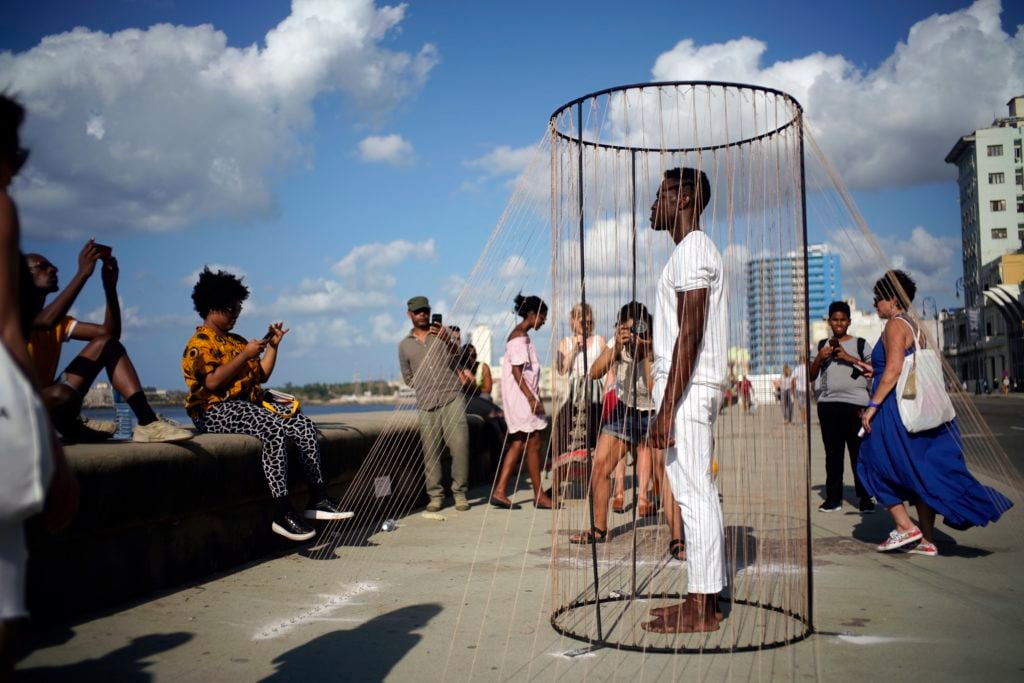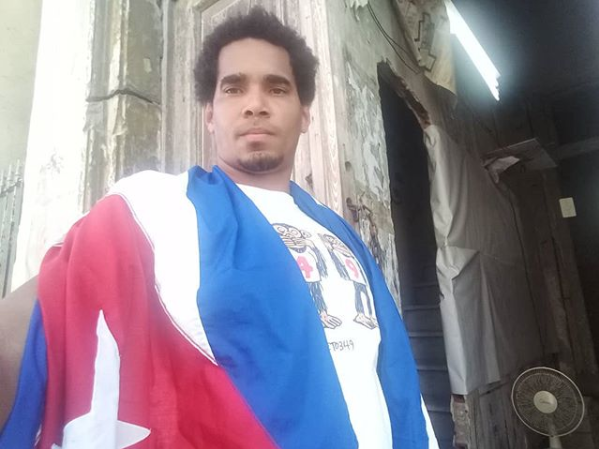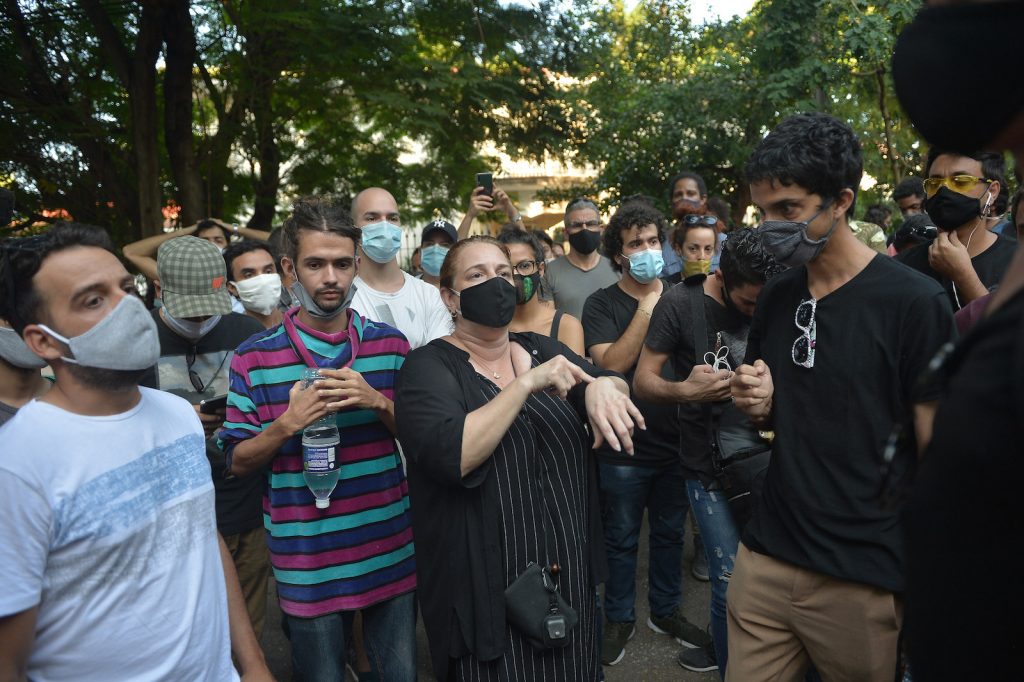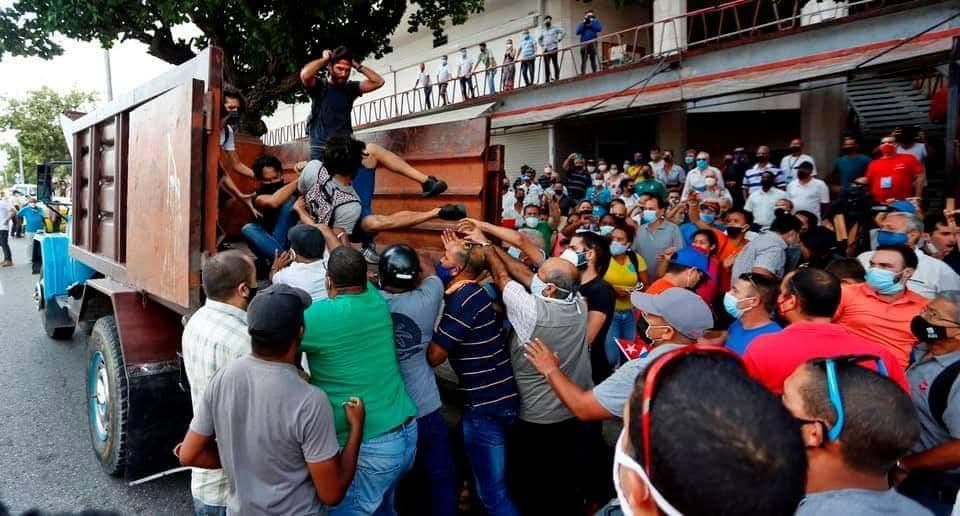Op-Ed
Cuba Is Plowing Ahead With the Havana Biennial—But Don’t Expect the Government to Allow Artists Who Participated in the Recent Protests
Artists may want to think twice before participating in this winter's event.

Artists may want to think twice before participating in this winter's event.

Coco Fusco

It’s not unheard of for big art events to take place in locations that have experienced all sorts of upheaval. Prospect New Orleans emerged in the wake of Hurricane Katrina; Documenta rose from the ashes of Nazi Germany. And it’s not uncommon for advocates of such events to argue that they revitalize economies in troubled spots.
The Havana Biennial has always faced challenges stemming from restrictions imposed by the United States, but its most recent postponement, in 2017, was due to damage caused by Hurricane Irma. This year, it might have expected another delay, as many major biennials have been rescheduled due to the pandemic, but the Cuban cultural ministry plans to forge ahead with the 14th edition. In light of the political conflicts that have been central to the news about Cuba this year, it would be hard not to see the next biennial as something of a smokescreen.
The Havana Biennial is slated to begin with a conference in mid-November, followed by exhibitions opening on December 6 and March 25, 2022. The government’s recent decision to reopen the country to tourism (for vaccinated visitors only) on November 15 seems perfectly timed to allow for such an international event.
While this might appear to be a courageous move on Cuba’s part, the country’s ongoing crises are unlikely to be smoothed over by a quick fix. Last July, the largest street protests in decades rocked the island and led to a massive wave of arrests. A recent report by the human rights nonprofit Prisoner Defenders alleges that more 5,000 people were detained and hundreds remain in jail.

Luis Manuel Otero Alcantara in September 2019. Courtesy of the artist’s Instagram.
Among those still detained are performance artist Luis Manuel Otero Alcántara and rapper Maykel Osorbo. Both are members of the San Isidro Movement, the collective of poets, artists, and musicians that has become a thorn in the side of the Cuban government in the past three years due to its advocacy on behalf of expressive freedoms. Otero Alcántara and Osorbo were featured in the mega-hit music video for “Patria y Vida“ that has become the anthem of government opponents. Anyelo Troya, the Havana-based videographer that secretly recorded their segments for the video, was later arrested during the protests and received a 10-month sentence in a summary judgement.
Visual artist Hamlet Lavastida was taken into custody two weeks before the protests began, when he returned to Cuba after a year abroad. He is accused of inciting others to commit crimes based on an idea shared in a private chat that was never realized. Although he was already in police custody with the July protests began, his interrogators have insinuated that Lavastida is somehow responsible for the unrest. In addition to these detentions, dozens of other artists, curators, activists, and independent journalists who have protested escalating repression of civil liberties have been subject to under house arrest for months.

Tania Bruguera speaks with other artists gathered outside the Ministry of Culture in Havana on November 27, 2020. Photo by Yamil Lage/AFP via Getty Images.
Among them is artist Tania Bruguera, who recently left Cuba after enduring months of forced confinement, threats, and periodic hostile interrogations. Despite denunciations of state repressions from Amnesty International, Human Rights Watch, and the European Parliament, the Cuban government is not showing signs of letting up; on the contrary, the new law known as Decree 35 will criminalize social media posts and other digital publications that are critical of the government.
The political climate on the island is itself plenty of reason to give potential visitors pause, but Cuba’s problems don’t stop there. While the rate of COVID-19 infections on the island was relatively low for the first year of the pandemic, the government’s decision last spring to allow Russian tourists into the Varadero resort area led to an outbreak of the Delta variant that has since spread throughout the island, making Cuba the Latin American country with the highest number of cases per capita.
Just two months ago, the Cuban government was celebrating the success rate of its home-grown COVID-19 vaccines, but immunization has been slow. This week, Cuban authorities announced that Chinese vaccines were being imported to speed up the process—which, it is hoped, will enable more tourists to return.
The conflicts between the government and the more independence-minded Cuban artists made international headlines last November, when hundreds of cultural workers held a sit-in in front of the Ministry of Culture to demand a cessation of police violence against members of the San Isidro Movement, and to insist on the need for dialogue with authorities about restrictions on creative expression. Out of that confrontation emerged the 27N group that has continued to work on artistic and activist projects focusing on civil rights. Internationally recognized Cuban artists such as Hamlet Lavastida, Bruguera, Reynier Leyva Novo, Leandro Feal, and Julio Llópiz-Casal are all active members.
After that, officials quickly reneged on their original promise for dialogue, denouncing the protesters as provocateurs and mercenaries on the U.S. government payroll. While Cuban artists have organized independent exhibitions during previous biennials to showcase work that would not be presented in state venues, it’s highly unlikely that any of those who have been involved in recent protests will be allowed to stage anything given the current political climate.

The July 11 protests in Cuba. Photo by Leonardo Fernández.
Several prominent cultural figures in Cuba have publicly disagreed with the state’s treatment of protesters, but there are some well-known Cuban artists who have remained silent throughout the recent unrest. Considering the long history in Cuba of making political loyalty a condition of professional advancement, it is reasonable to expect that those that have avoided publicly criticizing the government or participating in protests will figure among participants in the 14th Havana Biennial. KCHO, Wilfredo Prieto, and Humberto Díaz have already appeared on the biennial’s Facebook page in photos and videos that suggest they are involved in planning and promotion. Others who have been absent from public debates, such as Yornel Martinez, José Toirac, and Mabel Poblet are likely candidates as well.
Despite its status as a symbol of Third World independence, Cuba has long depended on foreign subsidy for the Havana Biennial. The event is as much a boon for the local arts community as it is for the government: The arrival of hundreds of arts professionals and collectors provides enough money from art sales and invitations abroad to keep many Cubans afloat for a year or two. European foundations have supported the publication of biennial catalogues, embassies have hosted exhibitions and events, and foreign artists invited to participate are usually expected to secure their own support for production of their work and travel.
U.S. foundation involvement is limited by the strictures of the embargo, but in the past the American Friends of the Ludwig Foundation and the Copperbridge Foundation have organized group excursions for arts patrons. Neither of these foundations responded when I asked about their plans for future involvement in the biennial. On the other hand, Ben Rodriguez-Cubeñas of the Cuban Artists Fund says he hopes to be able to continue support for American-based artists participating in “Behind the Wall” (renamed “The Juan Delgado Cultural Project” after its recently deceased founder), a public art exhibition along Havana’s Malecón that is the best-known collateral venture during the biennial.
What remains to be seen is the extent to which the new iteration of the biennial represents the interests of the Cuban state over and above the aspirations of its artists.
Coco Fusco is an artist and writer.